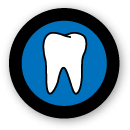April 2023
Digital scanners have revolutionized dentistry. Digital scanners are a valuable tool for dentists, enabling them to accurately capture detailed images of teeth and gums. These images can then be used to create digital models of the mouth, which can be used for a variety of purposes, from diagnosis and treatment planning to the creation of custom dental restorations.
One of the primary benefits of digital scanners in dentistry is their ability to provide highly detailed images of the teeth and gums. Traditional dental impressions, which involve placing a mold in the mouth and waiting for it to harden, can be uncomfortable for patients. Digital scanners, on the other hand, use advanced technology to capture highly detailed 3D images of the mouth, allowing dentists to see even the tiniest details.
Digital scanners can also streamline the dental treatment process, making it faster and more efficient. With traditional impressions, the mold must be sent to a dental laboratory, where a technician will use it to create a custom restoration. This process can take several days or even weeks. With digital scanners, however, the images can be sent electronically to a dental laboratory, where they can be used to create a custom restoration much more quickly.
Digital scanners can also improve the accuracy of dental restorations. With traditional impressions, there is always the risk of distortion or other errors, which can lead to a poorly fitting restoration. Digital scanners, on the other hand, provide highly accurate images, which can be used to create restorations that fit well. Traditional impressions are still of excellent quality and faster than using a scanner during the patient’s visit.
In addition to these benefits, digital scanners can also improve the patient experience. Many patients find traditional impressions uncomfortable, while digital scanners are much less invasive and can be completed easily. This can help to reduce anxiety and make the dental visit more pleasant for the patient.
Overall, the use of digital scanners in dentistry has revolutionized the field, providing dentists with a valuable tool for capturing detailed images of the teeth and gums. These images can be used for a variety of purposes, from diagnosis and treatment planning to the creation of custom dental restorations. With their ability to improve accuracy, streamline the treatment process, and improve the patient experience, digital scanners are likely to become even more widely used in the future.
